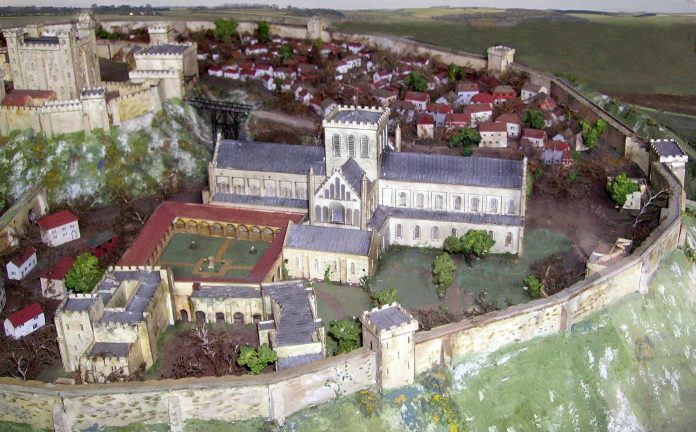A research team of students and academics carried out a geophysical survey of the ancient monument, scanning ground at the site with state-of-the-art equipment to map the remains of buried structures. They concentrated their survey around the inner and outer baileys.
Their investigations reveal the layout of a settlement including structures from the late 11th century, contemporary with the construction of a cathedral and castle. The city was inhabited for over 300 years, but declined in the 13th century with the rise of New Sarum (Salisbury).
The project findings mainly concentrate on the medieval period and highlight:
• A series of massive structures along the southern edge of the outer bailey defensive wall, perhaps suggesting large buildings of a defensive nature.
• An open area of ground behind these large structures, perhaps for mustering resources or people, or as part of a circular route through the city.
• Residential areas in the south east and south west quadrants of the outer bailey alongside the inner bailey ditch.
• Evidence of deposits indicating industrial features, such as kilns or furnaces.
• Features suggesting quarrying at the site after the 1300s and following the city’s decline – indicating a later period of habitation at the site.
Old Sarum was originally an Iron Age site established around 400 BCE and later occupied by the Romans.
A castle, originally built of timber and later stone, was built after the Norman Conquest and by 1092 CE a cathedral had been constructed – with an extension added in 1130. Eventually, a new cathedral established during the 1220s in what is now modern day Salisbury –marking the start of a gradual decline of Old Sarum.
However, the royal castle remained an administrative centre into the 14 century.
Seeking the layout of the medieval city
Archaeologist Kristian Strutt, Experimental Officer and Director of Archaeological Prospection Services at the University of Southampton, says: “Archaeologists and historians have known for centuries that there was a medieval city at Old Sarum, but until now there has been no proper plan of the site.
“Our survey shows where individual buildings are located and from this we can piece together a detailed picture of the urban plan within the city walls.”
The research was conducted as part of the Old Sarum and Stratford-Sub-Castle Archaeological Survey Project, directed by Kristian Strutt and fellow Southampton archaeologists Timothy Sly and Dominic Barker. Old Sarum is under the custodianship of English Heritage, who kindly granted permission for the investigation to take place.
For more information about Old Sarum visit: http://www.english-heritage.org.uk/daysout/properties/old-sarum/

 Wikimedia Commons
Wikimedia Commons